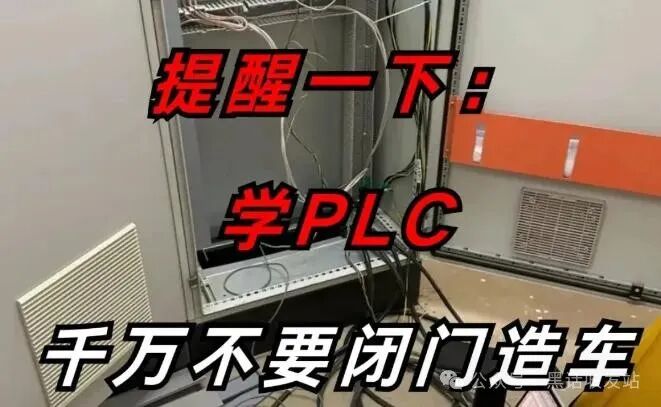
Intermediate PLC Programming: Indirect Addressing Technology for More Flexible and Efficient Array Processing!🔥 The challenges of traditional array processing, the efficiency black holes you might be overlooking! Have you encountered these issues in PLC programming: fixed array structures that are difficult to expand? Low data retrieval efficiency, slow program response? Wasted memory resources, high costs for equipment upgrades? **Don’t worry!** Today, I will unveil a core technology that changes PLC efficiency—**indirect addressing**. With this technology, you will be able to flexibly manipulate array data and significantly improve memory utilization without changing hardware, making your PLC programs more efficient and smarter!💡 Indirect addressing technology: the “magic key” to PLC programming. Imagine traditional array operations as a large book without a table of contents, where you can only flip through the pages one by one, which is time-consuming and laborious. Indirect addressing adds intelligent navigation to this book—just input a keyword, and you can quickly jump to the target page. The two core advantages of indirect addressing: Flexible access to array data: Dynamically locate based on index, easily handle irregular data. Efficient memory utilization: Avoid waste from fixed allocation, allowing memory resources to be used “on demand”.⚙️ Three scenarios to unlock the practical potential of indirect addressing: 1️⃣ Dynamic recipe management: More efficient production switching. In the food packaging industry, production lines need to frequently switch recipes. In traditional methods, each recipe occupies fixed array space, leading to serious memory waste. With indirect addressing, you can dynamically adjust indexes and quickly load the required recipe data. 🔹 Case: A food factory expanded its recipe management from 10 to 50 recipes after adopting indirect addressing, reducing production switching time from 10 minutes to 2 minutes, achieving a 500% efficiency increase! 2️⃣ Multi-specification product handling: Addressing complex demands. In automotive parts production, different specifications correspond to different control parameters. If fixed memory is reserved for each specification, resource waste is inevitable. With indirect addressing, you can flexibly access parameters for different specifications within a single array. 🔹 Stunning results: An automotive parts supplier increased the number of supported part specifications from 20 to 80 using this technology, while improving control response speed by 30%. 3️⃣ Historical data tracing: Efficient record access. In the pharmaceutical industry, data recording during production is critical. Traditional methods require fixed storage space for each batch, while indirect addressing allows for dynamic memory allocation based on demand, greatly enhancing data access efficiency. 🔹 Real application: A pharmaceutical company expanded its production batch record capacity from 100 to 500 records using indirect addressing technology, while reducing memory usage by 40%. 🚀 Five-minute introduction: Easily master indirect addressing technology. Step 1: Understand the basic principles of indirect addressing. Indirect addressing accesses array data by dynamically calculating index positions. In Siemens S7 series PLCs, you can implement this through the following steps: define a pointer variable to store the current index, use the pointer to point to the target position in the array, and dynamically update the pointer in the program for flexible access. Step 2: Start practicing with simple projects. 🔹 Recommended project: Replace fixed index arrays with indirect addressing in the recipe management module and observe changes in memory usage and program response. You will be surprised to find that memory efficiency can improve by at least 30%! Step 3: Avoid common pitfalls. Index out of bounds: Ensure pointer values are always within the array range. Memory conflicts: Avoid multiple pointers accessing the same memory area simultaneously. Debugging difficulty: Use comments to clearly label the purpose and range of each pointer to reduce debugging time. 💼 Successful enterprise cases: The amazing benefits of indirect addressing technology. Breakthroughs in the pharmaceutical industry: A medium-sized pharmaceutical company expanded its supported production recipes from 15 to 60 through indirect addressing, improving data access efficiency by 50%. They also extended equipment lifespan through program optimization, saving 200,000 in hardware upgrade costs. Miracles in the food industry: A food factory optimized packaging specification management using indirect addressing, expanding specifications from 8 to 32, reducing program response time by 40%, and completing customer orders 2 days earlier! A revolution in automotive manufacturing: A multinational automotive parts company optimized production line control through indirect addressing, integrating multiple production lines into a single system, reducing control hardware investment by 50%, while significantly enhancing production line flexibility. ⚠️ Industry insider: Why is indirect addressing technology underestimated? Equipment suppliers typically do not actively recommend indirect addressing technology because it greatly reduces the need for hardware upgrades. A sales manager revealed, “This technology is too powerful! Once customers master it, the lifespan of the equipment will be extended for several years, which is fatal for our hardware sales.” 🔮 Take action now: Open a new chapter in programming with indirect addressing! Assess your system: Check if existing programs have fixed array structures. Try indirect addressing: Start with small-scale projects and gradually expand to the entire system. Continue learning and optimizing: Read technical documents and participate in industry forums to share experiences. 📣 Reader interaction: Share your programming stories to win exclusive benefits! Have you encountered bottlenecks in array processing in your projects? Which PLC model is most suitable for indirect addressing technology? What insights or challenges have you experienced in practice? Limited-time benefits: The first 20 readers who share their experiences will receive our provided **”Indirect Addressing Technology Practical Manual”**! Indirect addressing is not just a programming skill; it is a way of thinking that empowers the future. Mastering it will allow you to break through the limitations of traditional technology and inject new vitality and efficiency into your PLC projects! What are you waiting for? Start your PLC optimization journey now! #IndustrialAutomation #PLCTips #IndirectAddressing #EfficiencyRevolution #TechnicalEnhancement